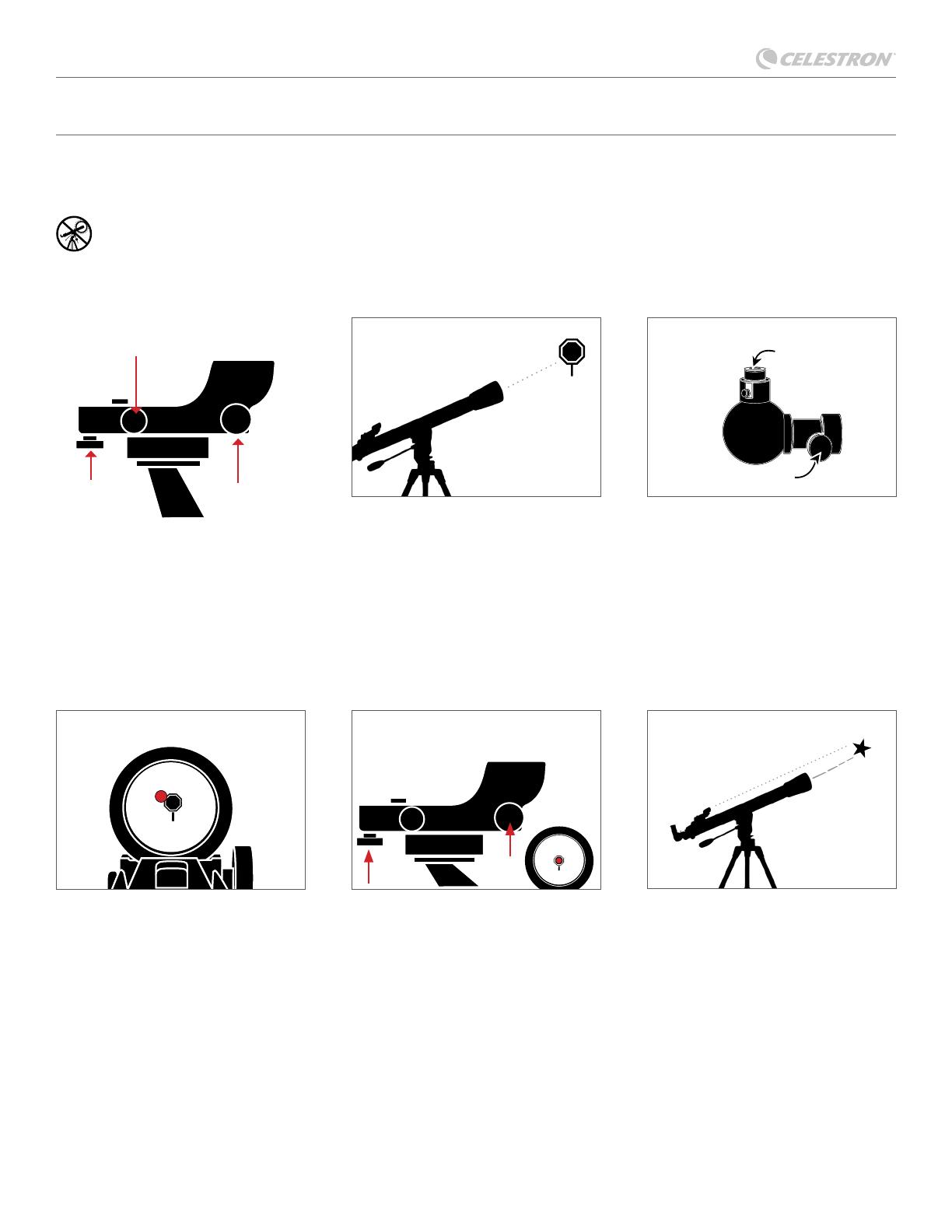
StarPointerTM Leuchtpunkt-Sucherfernrohr
13 | DEUTSCH
AUSRICHTEN DES STARPOINTER SUCHERFERNROHR
Der Sucher ist eines der wichtigsten Teile Ihres Teleskops. Es hilft Ihnen, Objekte zu suchen und im Okular zu zentrieren. Wenn Sie das
Teleskop zum ersten Mal zusammenbauen, müssen Sie das Sucherfernrohr nach der Hauptoptik des Teleskops ausrichten. Am besten tun
Sie dies tagsüber* mit Zielen auf der Erde.
* WARNUNG BEI SONNENBEOBACHTUNG! Versuchen Sie niemals, die Sonne ohne Sonnenfilter durch dieses Sucherfernrohr oder ein anderes Teleskop zu betrachten.
IHR SUCHERFERNROHR IST JETZT
AUSGERICHTET!
5. Es sollte keine Neuausrichtung
erforderlich sein, es sei denn, es wird
gestoßen oder fallen gelassen. Wenn
Sie die Ausrichtung testen möchten,
richten Sie den Leuchtpunkt auf ein
anderes Landziel. Überprüfen Sie
dann, ob sich das Objekt in der Mitte
des Sichtfelds des Okulars befindet.
DURCH DAS SUCHERFERNROHR
SCHAUEN
3. Schauen Sie mit genau zentriertem
Objekt im Okular durch das optische
Fenster des Sucherfernrohrs und
lokalisieren den Leuchtpunkt.
20-mm-Okular
Fokussierknöpfe
ZENTRIEREN SIE DAS ZIEL IM OKULAR
2. Schauen Sie mit Ihrem Okular mit der
niedrigsten Vergrößerung durch das
Teleskop. Bewegen Sie das Teleskop,
bis Ihr ausgewähltes Objekt in der
Mitte der Ansicht liegt. Wenn das
Bild unscharf ist, drehen Sie den
Fokussierknopf so lange, bis das Bild
scharf ist.
22
5533
Ein-/Aus-Knopf
Höheneinstellungs-
Knopf
(auf und ab)
Azimut-Einstellknopf
(von Seite zu Seite) WÄHLEN SIE EIN ZIEL
1. Nehmen Sie das Teleskop tagsüber
mit nach draußen und schalten Sie
das Sucherfernrohr mit dem Ein-/
Aus-Knopf ein. Suchen Sie nach
einem leicht erkennbaren Objekt,
beispielsweise einer Straßenlaterne,
einem Autokennzeichen oder einem
Schild. Das Objekt sollte so weit wie
möglich entfernt sein, mindestens 400
Meter entfernt.
SUCHERFERNROHR AUSRICHTEN
4. Ohne das Teleskop zu bewegen,
verwenden Sie die beiden
Einstellknöpfe des Sucherfernrohrs,
um es zu bewegen, bis der Leuchtpunkt
über dem Objekt erscheint, das Sie im
Okular beobachten.
11
44
HINWEIS: Schalten Sie das StarPointer-Sucherfernrohr unbedingt aus, wenn Sie es nicht verwenden, um die Batterien zu schonen. Neue Batterien können Sie online
oder in Uhren-/Elektronikgeschäften kaufen.



















